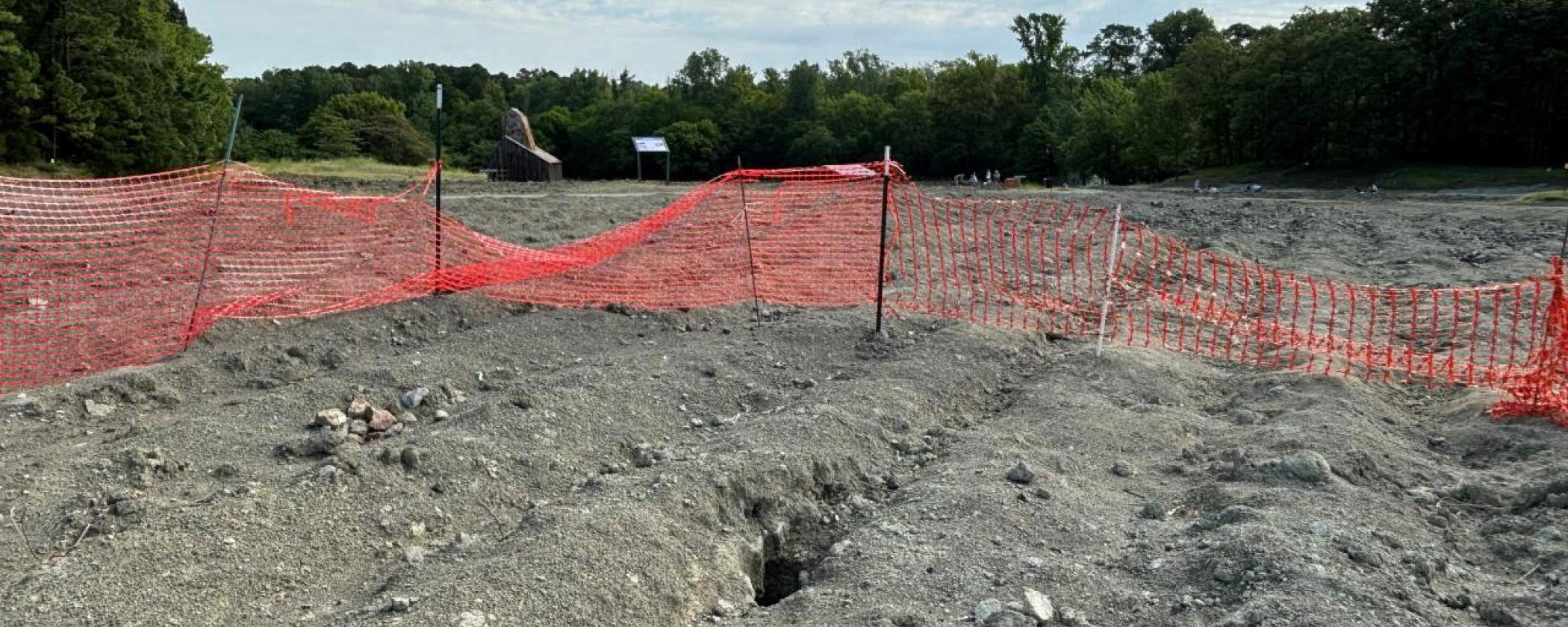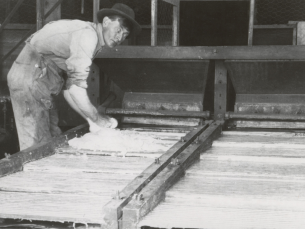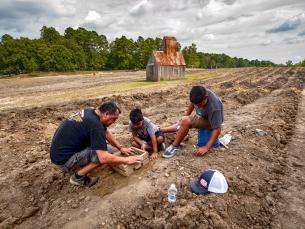
Crater of Diamonds “sinkhole” classified as man-made
By: Sarah ReapGreetings from Crater of Diamonds State Park! A few weeks ago, a large cavity was uncovered on the north side of the diamond search area after some dirt work by park maintenance. Local visitors coined this hole the Crater of Diamonds "sinkhole". However, the term “sinkhole” is a bit misleading regarding its origin.
Following Memorial Day, a park guest approached a staff member in the diamond search area to let them know about a large hole on the north side of the search area. Holes are not uncommon at the Crater of Diamonds; people often dig large holes and fail to fill them in properly. According to Park Superintendent Caleb Howell, “I was skeptical of the description at first, but upon visual inspection, I was shocked about the size and location of the hole. I knew this was an unusual occurrence.”
On the surface, the hole was about one foot wide, two feet long, and four feet deep, opening to an underground cavity several feet in diameter. Curious if anything like this had happened before, Howell reached out to his available resources, one of which was a previous superintendent who had served over two decades at the park. “He was familiar with one previous hole and identified the same general area as where this one was located.”
Immediate steps were taken to fence off the area surrounding it to ensure the safety of guests. Howell stated, “We secured an area greater than the size of the underground cavity we could observe.” Due to confusion over what caused the hole and concern about whether other holes could be present, Arkansas Geological Survey Geology Supervisor Doug Hanson was called in for a visit on June 11.
Upon review, Hanson described the hole as a “yard hole” rather than a "sinkhole". He explained further, stating that the rock in the Crater of Diamonds search area is “not the right rock type for sink holes... we would deem this as anthropogenic [caused by humans].” Sinkholes often occur in areas rich with soluble rock, such as limestone, that is easily eroded by groundwater and causes collapse. In this instance, loose material gave way to an underlying cavity formed by previous human mining activities.
By overlaying the GPS coordinates of the hole with historical mining maps, it was determined that this hole is likely due to historical mining activity during the early 20th century. The current hole is located near the end of where one of the trenches ran, according to maps.
In July, the park plans to rent a large excavator to dig out the entirety of the manmade hole and fill it back in properly with surrounding diamond-bearing material. This work will take place while the search area is closed, for guest safety.
Howell feels confident with the project moving forward and states, “It was comforting to get Mr. Hanson’s professional review of the hole. With the knowledge that this was caused by previous human mining activities, we can more accurately pinpoint other potential areas of concern in the diamond search area, whereas natural occurrences would be more difficult to predict. This gives me more confidence that we can safely manage this special place while our guests enjoy their adventure at the diamond mine.”
Currently, guests are asked to stay on the outside of the orange fencing surrounding the hole and use caution around the fence. For any questions, please contact Crater of Diamonds State Park at 870-285-3113 or CraterofDiamonds@arkansas.com.


